On St. John Damascene
"God Wants to Rest in Us"
VATICAN CITY, MAY 6, 2009 (Zenit.org).- Here is a translation of the address Benedict XVI gave today during the general audience in St. Peter's Square. He continued his series on great writers of the Church in the Middle Ages, focusing today on St. John Damascene.
Dear brothers and sisters:
I would like to speak today about John Damascene, a prominent personality in the history of Byzantine theology, a great doctor in the history of the universal Church. He is above all an eye witness of the passage from the Greek and Syriac culture, shared in the eastern part of the Byzantine Empire, to the culture of Islam, which took over space with its military conquests in the territory ordinarily recognized as the Middle or Near East.
John, born to a rich Christian family, took on while still young the post -- perhaps also held by his father -- as the economic head of the kingdom. Quite soon, however, unsatisfied with life at court, he fully developed a choice for the monastic life, entering the monastery of San Sabas, close to Jerusalem. It was around the year 700. Never leaving the monastery, he dedicated himself with all his strength to ascesis and literary activity, without spurning a certain pastoral activity, of which his numerous homilies give witness. His liturgical memorial is celebrated Dec. 4. Pope Leo XIII proclaimed him a doctor of the universal Church in 1890.
In the East, he is remembered above all for his three discourses against those who calumniate holy images, [discourses] which were condemned after his death by the iconoclast Council of Hieria (754). These discourses, however, were the principal motive for his reinstatement and canonization by the orthodox fathers gathered in the Second Council of Nicaea (787), the Seventh Ecumenical Council. In these texts it is possible to find the first important theological attempts to legitimize the veneration of sacred images, uniting to them the mystery of the incarnation of the Son of God in the womb of the Virgin Mary.
John Damascene was also one of the first to distinguish between the public and private worship of Christians, and between adoration (latreia) and veneration (proskynesis): The first can only be directed to God, highly spiritual; the second on the other hand can use an image to direct oneself to he who is represented by it.
Obviously, a saint cannot in any way be identified with the material of which an icon is made. This distinction quickly resulted very important to respond in a Christian way to those who claimed as universal and perennial the observance of the severe prohibition in the Old Testament about the use of images in worship. This was a great discussion also in the Islamic world, which accepts this Jewish tradition of the total exclusion of images for worship. Christians on the other hand, in this context, considered the problem and found a justification for the veneration of images.
Damascene wrote: "In other times, God had never been represented in an image, being incorporeal and without a face. But given that now God has been seen in the flesh and has lived among man, I represent what is visible in God. I do not venerate matter, but the Creator of matter, who has made himself matter for me and has deigned to dwell in matter and carry out my salvation through matter. I will never cease because of this to venerate the matter through with salvation has come to me.
"But I do not venerate it absolutely like [I do] God! How could God be that which has received existence from non being? ... Rather I venerate and respect also all the rest of the matter that has procured salvation, inasmuch as it is full of holy energies and graces. Is not perhaps matter the wood of the cross thrice blessed? ... And the ink and the holy book of the Gospels are not matter? The salvific altar that dispenses us the bread of life is not matter? ... And before all, is not matter the flesh and the blood of my Lord? Should the sacred character of all of this be suppressed? Or should it be conceded to the tradition of the Church the veneration of the images of God and that of the friends of God that are sanctified by the name they carry, and because of this reason are dwelt in by the grace of the Holy Spirit. Do not be offended therefore by matter: It is not despicable because nothing that God has made is despicable" (Contra imaginum calumniatores, I, 16, ed. Kotter, pp. 89-90).
We see that, because of the Incarnation, matter appears as divinized, is seen as the dwelling place of God. This is a new vision of the world and material realities. God has become flesh and flesh has become truly the dwelling place of God, whose glory shines forth in the human face of Christ. Therefore the invitations of the doctor of the East are even today extremely current, considering the great dignity that matter has received in the Incarnation, able to come to be, in faith, efficient sign and sacrament of man's encounter with God.
John Damascene is, therefore, a privileged witness of the veneration of icons, which would come to be one of the most distinctive aspects of Eastern theology and spirituality up to today. And nevertheless it is a form of worship that simply belongs to the Christian faith, to the faith in this God that has become flesh and made himself visible. The teaching of St. John Damascene thus is inserted in the tradition of the universal Church, whose doctrine on the sacraments takes into account that material elements taken from nature can change through grace in virtue of the invocation (epiclesis) of the Holy Spirit, accompanied by the confession of the true faith.
United to these underlying ideas, John Damascene also places the veneration of the relics of the saints, on the base of the conviction that holy Christians, having been made participants in the resurrection of Christ, cannot be considered simply as "the dead." Enumerating, for example, those whose relics or images are worthy of veneration, John specifies in his third discourse in defense of images: "Before all (we venerate) those among whom God has rested, the only holy one who dwells among the saints (cf. Isaiah 57:15), such as the holy Mother of God and all the saints. These are those who, inasmuch as possible, have made themselves similar to God with their will and by the indwelling and help of God, [and] are really called gods (cf. Psalm 82:6), not by nature, but rather by contingence, as red-hot iron is called fire, not by nature, but by contingence and through participation in the fire. It is said, in fact: "You will be holy because I am holy" (Leviticus 19:2)" (III, 33, col. 1352 A).
After a series of references of this type, Damascene could serenely deduce, therefore:"God, who is good and superior to all goodness, did not content himself with the contemplation of himself, but rather wanted there to be beings benefited by him who could come to be participants in his goodness: For this he created out of nothing all things, visible and invisible, including man, a visible and invisible reality. And he created him thinking of him and making him a being capable of thinking (ennoema ergon) enriched by the word (logo[i] sympleroumenon) and oriented toward the spirit (pneumati teleioumenon)" (II, 2, PG 94, col. 865A).
And to clarify later this thought, he adds: "It is necessary to leave oneself full of awe (thaumazein) at all the works of providence (tes pronoias erga), praise them all and accept them all, overcoming the temptation to point out in them aspects that to many seem unjust or iniquitous (adika), and admitting instead that God's project (pronoia) goes beyond the cognitive and understanding capacity (agnoston kai akatalepton) of man, meanwhile on the other hand only he knows our thoughts, our actions and even our future" (II, 29, PG 94, col. 964C).
Already Plato, on the other hand, said that all philosophy begins with awe: Also our faith begins with awe at creation, at the beauty of God who becomes visible.
This optimism of natural contemplation (physikè theoria), of this seeing in visible creation the good, the beautiful and the true, this Christian optimism is not a naïve optimism: It takes into account the wound inflicted on human nature by free choice desired by God and used inappropriately by man, with all the consequences of widespread disharmony that have come from it. From here stems the need, clearly perceived by the theology of Damascene, that the nature in which the goodness and beauty of God is reflected, wounded by our fault, "would be strengthened and renewed" by the descent of the Son of God in the flesh, after in many ways and on many occasions God himself had tried to show that he had created man so that he would be not only in "being," but in "being good" (cf. La fede ortodossa, II, 1, PG 94, col. 981).
With a passionate exclamation, John explains: "It was necessary for nature to be strengthened and renewed and that the path of virtue would be indicated and concretely taught (didachthenai aretes hodòn), [the path] that banishes corruption and leads to eternal life ... Thus appeared on the horizon of history the great sea of the love of God for man (philanthropias pelagos) ..."
It is a beautiful expression. We see, on one hand, the beauty of creation and on the other, the destruction caused by human fault. But we see in the Son of God, who descends to renew nature, the sea of the love of God for man.
John Damascene continues: "He himself, the Creator and Lord, fought for his creature, transmitting his teaching to him with his example ... And thus the Son of God, while subsisting in the form of God, descended from the heavens and lowered himself ... toward his servants ... carrying out the newest thing of all, the only thing truly new under the son, through which he manifested in fact the infinite power of God" (III, 1. PG 94, col. 981C-984B).
We can imagine the consolation and the joy that filled the hearts of the faithful with these words so full of fascinating images. We too hear them today, sharing the same sentiments of the Christians of that time: God wants to rest in us, he wants to renew nature also through our conversion, he wants to make us participants in his divinity. May the Lord help us to make these words the essence of our lives.
Dear Brothers and Sisters,
Saint John Damascene was a towering figure in the history of Eastern theology. He was born into a wealthy Christian family at a time when his native Syria was already under Arab rule. He left a promising career in government in order to enter monastic life. His best-known works are his Discourses against the Iconoclasts, which offer an important contribution to the proper theological understanding of the veneration of sacred images. Saint John Damascene was among the first to distinguish between adoration, which is due to God alone, and veneration, which can rightly be given to an image in order to assist the Christian to contemplate him whom the image represents. It is true that in the Old Testament, divine images were strictly forbidden. But now that God has become incarnate and has assumed visible, material form in Jesus, matter has received a new dignity. The wood of the Cross, the book of the Gospels, the altar of sacrifice: all have been used by God to bring about our salvation. Matter now serves as a sign and sacrament of our encounter with God. When we participate in the sacraments, when we venerate icons, if we do so in faith and in the power of the Holy Spirit, they truly become a means of grace. Despite human sinfulness, God has chosen to dwell within men and women, making them holy, making them sharers in his infinite goodness and holiness. Let us welcome him with joy into our hearts.
St. John of Damascus
Feastday: December 3
b. 645 d. 749
Saint John Damascene has the double honor of being the last but one of the fathers of the Eastern Church, and the greatest of her poets. It is surprising, however, how little that is authentic is known of his life. The account of him by John of Jerusalem, written some two hundred years after his death, contains an admixture of legendary matter, and it is not easy to say where truth ends and fiction begins.
The ancestors of John, according to his biographer, when Damascus fell into the hands of the Arabs, had alone remained faithful to Christianity. They commanded the respect of the conqueror, and were employed in judicial offices of trust and dignity, to administer, no doubt, the Christian law to the Christian subjects of the Sultan. His father, besides this honorable rank, had amassed great wealth; all this he devoted to the redemption of Christian slaves on whom he bestowed their freedom. John was the reward of these pious actions. John was baptized immediately on his birth, probably by Peter II, bishop of Damascus, afterwards a sufferer for the Faith. The father was anxious to keep his son aloof from the savage habits of war and piracy, to which the youths of Damascus were addicted, and to devote him to the pursuit of knowledge. The Saracen pirates of the seashore neighboring to Damascus, swept the Mediterranean, and brought in Christian captives from all quarters. A monk named Cosmas had the misfortune to fall into the hands of these freebooters. He was set apart for death, when his executioners, Christian slaves no doubt, fell at his feet and entreated his intercession with the Redeemer. The Saracens enquired of Cosmas who he was. He replied that he had not the dignity of a priest; he was a simple monk, and burst into tears. The father of John was standing by, and expressed his surprise at this exhibition of timidity. Cosmas answered, "It is not for the loss of my life, but of my learning, that I weep." Then he recounted his attainments, and the father of John, thinking he would make a valuable tutor for his son, begged or bought his life of the Saracen governor; gave him his freedom, and placed his son under his tuition. The pupil in time exhausted all the acquirements of
 his teacher. The monk then obtained his dismissal, and retired to the monastery of S. Sabas, where he would have closed his days in peace, had he not been compelled to take on himself the bishopric of Majuma, the port of Gaza.
his teacher. The monk then obtained his dismissal, and retired to the monastery of S. Sabas, where he would have closed his days in peace, had he not been compelled to take on himself the bishopric of Majuma, the port of Gaza.The attainments of the young John of Damascus commanded the veneration of the Saracens; he was compelled reluctantly to accept an office of higher trust and dignity than that held by his father. As the Iconoclastic controversy became more violent, John of Damascus entered the field against the Emperor of the East, and wrote the first of his three treatises on the Veneration due to Images. This was probably composed immediately after the decree of Leo the Isaurian against images, in 730.
Before he wrote the second, he was apparently ordained priest, for he speaks as one having authority and commission. The third treatise is a recapitulation of the arguments used in the other two. These three treatises were disseminated with the utmost activity throughout Christianity.
The biographer of John relates a story which is disproved not only by its exceeding improbability, but also by being opposed to the chronology of his history. It is one of those legends of which the East is so fertile, and cannot be traced, even in allusion, to any document earlier than the biography written two hundred years later. Leo the Isaurian, having obtained, through his emissaries, one of John's circular epistles in his own handwriting -- so runs the tale -- caused a letter to be forged, containing a proposal from John of Damascus to betray his native city to the Christians. The emperor, with specious magnanimity, sent this letter to the Sultan. The indignant Mahommedan ordered the guilty hand of John to be cut off. John entreated that the hand might be restored to him, knelt before the image of the V
 irgin, prayed, fell asleep, and woke with his hand as before. John, convinced by this miracle, that he was under the special protection of our Lady, resolved to devote himself wholly to a life of prayer and praise, and retired to the monastery of Saint Sabas.
irgin, prayed, fell asleep, and woke with his hand as before. John, convinced by this miracle, that he was under the special protection of our Lady, resolved to devote himself wholly to a life of prayer and praise, and retired to the monastery of Saint Sabas.That the Sultan should have contented himself with cutting off the hand of one of his magistrates for an act of high treason is in itself improbable, but it is rendered more improbable by the fact that it has been proved by Father Lequien, the learned editor of his works, that Saint John Damascene was already a monk at Saint Sabas before the breaking out of the Iconoclastic dispute.
In 743, the Khalif Ahlid II persecuted the Christians. He cut off the tongue of Peter, metropolitan of Damascus, and banished him to Arabia Felix. Peter, bishop of Majuma, suffered decapitation at the same time, and Saint John of Damascus wrote an eulogium on his memory. Another legend is as follows: it is probably not as apocryphal as that of the severed hand: -- The abbot sent Saint John in the meanest and most beggarly attire to sell baskets in the marketplace of Damascus, where he had been accustomed to appear in the dignity of office, and to vend his poor ware at exorbitant prices. Nor did the harshness of the abbot end there. A man had lost his brother, and broken-hearted at his bereaval, besought Saint John to compose him a sweet hymn that might be sung at this brother's funeral, and which at the same time would soothe his own sorrow. John asked leave of
 the abbot, and was curtly refused permission. But when he saw the distress of the mourner he yielded, and sang him a beautiful lament. The abbot was passing at the time, and heard the voice of his disciple raised in song. Highly incensed, he expelled him from the monastery, and only re- admitted him on condition of his daily cleaning the filth from all the cells of his brethren. An opportune vision rebuked the abbot for thus wasting the splendid talents of his inmate. John was allowed to devote himself to religious poetry, which became the heritage of the Eastern Church, and to theological arguments in defense of the doctrines of the Church, and refutation of all heresies. His three great hymns or "canons," are those on Easter, the Ascension, and Satin Thomas's Sunday. Probably also many of the Idiomela an Stichera which are scattered about the office- books under the title of "John" and "John the Hermit" are his. His eloquent defense of images has deservedly procured him the title of "The Doctor of Christian Art." The date of his death cannot be fixed with any certainty; but it lies between 754 and before 787.
the abbot, and was curtly refused permission. But when he saw the distress of the mourner he yielded, and sang him a beautiful lament. The abbot was passing at the time, and heard the voice of his disciple raised in song. Highly incensed, he expelled him from the monastery, and only re- admitted him on condition of his daily cleaning the filth from all the cells of his brethren. An opportune vision rebuked the abbot for thus wasting the splendid talents of his inmate. John was allowed to devote himself to religious poetry, which became the heritage of the Eastern Church, and to theological arguments in defense of the doctrines of the Church, and refutation of all heresies. His three great hymns or "canons," are those on Easter, the Ascension, and Satin Thomas's Sunday. Probably also many of the Idiomela an Stichera which are scattered about the office- books under the title of "John" and "John the Hermit" are his. His eloquent defense of images has deservedly procured him the title of "The Doctor of Christian Art." The date of his death cannot be fixed with any certainty; but it lies between 754 and before 787.Saint John Damascene and the Iconoclasts
St. John the Evangelist succinctly described the essence of the Incarnation when he wrote: “The Word was made Flesh and dwelt amongst us.”
Fr. Leonard Feeney, M.I.C.M., speaking about the Incarnational nature of Christianity, stated:
I am going to tell you now, and will tell you many times again, how grateful I am to Saint John for making the Incarnational message of Christianity so completely unmistakable and never to be doubted again, by his brilliant phrase in the beautiful canticle which opens his Gospel. Instead of saying, ‘God became visible,’ Saint John says, ‘The word was made flesh and dwelt amongst us.’ Everyone knows what ‘was made flesh’ means.
…Visible gets a very strong, central and safeguarded value when you put it that way. Flesh is visible, and unmistakably so. God is there to be heard, as flesh speaks; to be seen as flesh walks. A woman could touch the hem of God’s garments.
The whole story of our Emmanuel’s entrance into the world is finished after that matchless challenge of Saint John. There can be no arbitrary discussions about what you mean by visible any more…. God has been flesh in this world, and if you are not finding Him from the messages, the words, the pictures, the records, the reports that ultimately stem from Flesh and Blood pointing to Himself, opening His Heart, and saying: ‘This is God! Bones and blood, and nail-pierced hands’ — you have not got Christianity. I do not care what else you are touching — you have not got Christianity.
…Christianity is an overt, seeable, tangible, liftable, dealable-with religion. You can point to it! There it goes! Here it lies!
It is so precious in visible form, in Incarnational form, that even when the great soul that kept it alive is gone — let us say when the soul of a saint has left his body — the body is still sacred to Christianity. Its bones are relics. Its clothing is a relic. The beard of Saint Francis, the robe of St. Dominic, the Little Flower’s hair and shoes, the mantle which she wore, the little bed she slept on, and the straw on which she coughed herself to eternity — all are relics.
…Let me go back and speak again about the word visible. Visible means: visible either in origin or termination. Either the lead or the finish is something tangible, seeable, or holdable.
Visibility must occur somewhere in the arrangement that touches you, if you are going to be a true Catholic according to Christ’s Incarnational requirements.
Father Feeney is best known for his defense of the dogma extra ecclesiam nulla salus (no salvation outside the Church). It is likely that future generations will know him as an “Apostle of the Incarnation” because he defended the necessity of God’s Incarnational economy against those who deny that all men must, if they are to be saved, be united to Christ as members of his Mystical Body.
The subject of this article — Iconoclasm — was another attack on the Incarnation that occurred in a more direct and obvious way. Iconoclasm was a frontal assault on that seeable, touchable, and holdable attribute of the Church. Iconoclasm and the Iconoclasts would have eradicated that visible notion of the Church and made her the invisible entity, the “mere Christianity,” that she has become today in the minds of many. By seeking to suppress the very visible representations of Our Lord Jesus Christ, His Mother, and the Communion of Saints in Heaven, the Iconoclasts attempted to de-Incarnationalize Christianity and replace it with an immaterial and ethereal contemplation of God. To de-Incarnationalize Christianity is to remove the visible essence of the Church and her moral authority from the mind, to eradicate the priestly hierarchy, and to break down the distinction between the sacred and the profane. Once the Church and her visible essence have been removed from the mind, the other Authority — the State — soon fills the vacuum, and its “civil” religion replaces that of the True Faith. There are many examples of this in history, including the Protestant Revolt. Wherever Protestantism took hold (often accompanied by Iconoclasm), the end product was the consolidation of power — both civil and religious — in the hands of the State.
Just as Father Feeney was raised up by God to defend the Incarnation in our time, there was a great defender of the True Faith and Incarnational Christianity who was raised up by God at the time of the Iconoclast Heresy. He was known as the “Golden Stream,” the Chrysorrhoës (due to the eloquence by which he was able to defend the Faith and vanquish the poor thinking of the adversaries), and his name was St. John of Damascus or — to the West — St. John Damascene. This article will describe that early attack on the Incarnation and St. John’s heroic defense of Him.
Roots of Iconoclasm
Iconoclasm comes from the Greek Eikonoclasmos , which is literally “image breaking.” Eradication of the visible representations, in any form, be it statues or paintings of Christ, His Mother, or the Saints, was the end to which Iconoclasts strove. The rise of Iconoclasm can be traced to a variety of causes, all coming together at that particular time in history. As is the case with all heresy, we are dealing not only with a doctrinal error, but also with historical circumstances which form its particular character. To aid us in our understanding of Iconoclasm then, we will quickly glance at a few circumstances and attributes of the heresy, and then we will go on to describe the events which occurred at this pivotal era in the history of Christendom.
Geographically:
Iconoclasm and the Iconoclasts operated within the boundaries of the Byzantine Roman Empire, with some minor exceptions. 1
The Holy Father in Rome opposed any manifestation of Iconoclasm in the Church in the West. Likewise, those Eastern Patriarchs who were not within the bounds of the Roman Empire, but situated in lands under the control of Islam, were against the Iconoclasts.
Iconodules (”Defenders of Images”) who lived within territories controlled by the Moslems were free to write against the Iconoclast heresy without fear of persecution. As we will see, our hero, St. John of Damascus, was one such Iconodule.
Politically:
The carrying out of the persecution came primarily from the secular head of state, the Roman Emperor, and the Praetorian Guard — his professional army.
During the 8th and 9th centuries, the Byzantine Empire was closely allied with the Jewish Kingdom of Khazaria. Not only was there a close military alliance (both kingdoms opposed the advancement of Islam into North Central Asia and the West), there existed as well a close political relationship between the Roman Emperor and the Kagans of Khazaria. In fact the relationship was so close that Khazaria could claim to have contributed at least two Emperors and two Empresses to the throne of Byzantium during this time. (For example, the first of the Iconoclast Emperors, Leo the Isaurian, arranged for the marriage of his son Constantine to the daughter of the Kagan of Khazaria. 2 Constantine’s son by his Khazarian wife would rule Byzantium as Leo IV, “the Khazar.”)
Part of the relationship between Khazaria and Byzantium included the contribution of Khazarian soldiers to the Emperor’s professional army — his Praetorian Guard. (Note: The professional soldier swore allegiance to the person of the Emperor and not the Empire at large.) It was the army that first put Leo on the throne.
The Roman Emperors never gave up their claims to Pontificus Maximus in regard to religious things even after having become Christian. Caesaro-Papism (head of state = head of church) was rooted in their makeup since the times of pagan Rome, when the Caesars were looked upon as gods. Eradicating visible manifestations of the Spiritual Authority would certainly fit well into the Emperor’s plans, as he wanted to consolidate power within his realm.
Theologically and Philosophically:
St. John’s arguments show that the Iconoclast position de-Incarnationalizes religion and turns it into a form of Manichaeism, 3 where flesh is evil and the corporate body of the Church is replaced by the individual’s immaterial contemplation of a God who is no longer “the Word made Flesh.”
Carried to its extreme, Iconoclasm becomes Docetism, 4 where God merely appears to use a body of flesh. Docetism is very much alive in many modern Christian heresies.
Enter the Iconoclasts
The Roman Emperor Leo III, “the Isaurian,” who reigned from 716 to 741, was the first of the Iconoclasts. As his surname denotes, he came from the district of Isauria, located in what is now south central Turkey. Isauria was once a part of the district of Galatia in the time of the Apostles. St. Paul evangelized this region of Asia Minor where he attempted to convert his fellow Jews to the Catholic Faith. From his Epistle to the Galatians we can see that he came amongst large numbers of Jews who lived in that area, many of whom never ceased to pervert and distort the teachings of the true Faith. In fact, at the time of Leo, many Jews still lived in this region as did members of the heretical sect called the Paulicians, 5 whose teachings mirrored those of Mani-chaeism. The Catholic historian Conybeare made the observation that the Iconoclast Emperors were practically Paulicians themselves.
The story is told of Leo III’s youth that, while still in his father’s cabin amid the mountains of Isauria, he once heard Jews blaspheme and curse an image of the Redeemer. One of them turned to him and jokingly remarked: “Were you emperor, would you not destroy all those impious images?” “I swear,” replied the boy, “that I should not spare a single one!” 6
In time, Leo’s father, a peasant tradesman, moved the family to Thrace (where many Paulicians were emigrating), raised sheep, and sent 500 of them, with his son Leo in the bargain, as a present to the Emperor Justinian II. Leo became guardsman of the palace, then commander of the Anatolian legions. After forcing the Roman Emperor Theodosius III to abdicate, Leo was made Emperor by the vote of his army, thus becoming the fourth emperor in three years to sit upon the Byzantine throne. His rule would last 25 years, and through him would begin what is known in history as the Isaurian dynasty.
In the year 723, in order to prove to his subjects that he was not a Jew, Leo issued a decree giving all Byzantine Jews the choice between Christianity or banishment. By and large, the Jews received baptism. 7
Three years later, Leo published another decree announcing that in gratitude for the favors heaped upon him by God since his accession, he wished to destroy the idolatry which had crept into the Church; that the pictures of Christ, of the Blessed Virgin, and the Saints were idols (based upon his understanding of Exodus 20:4-5) to which honor was given that was only due to a jealous God. He accordingly ordered their removal from the churches, oratories and private dwellings. St. Germanus, the Patriarch of Constantinople, refused to sign his name to the edict, and in reply to the Emperor he said: “Christians do not worship images, but only honor them as memorials of the saints and of their virtues. Painting is but an epitome of history for Christians, not an idolatry. You must distinguish between direct and relative veneration .” (Emphasis ours. This sentence briefly puts forth a major argument used by Catholics against the Iconoclasts. It is found in St. John’s writings and in the texts of the Council of Nicea II.) Leo refused to understand so clear and simple an explanation. He again ordered St. Germanus to receive his decree with the alternative of banishment or even death in case of refusal. When Germanus again refused, the Emperor physically struck the Patriarch and, in time, with the senate’s approval, sent him into exile as a traitor. A willing and compliant priest named Anastasius took the Patriarch’s place.
As Father J.E. Darras relates, “From that hour an unparalled fanaticism wreaked its fury upon every sacred symbol. Leo’s troops broke into the churches and private dwellings, destroyed every pious work of art, and murdered all who dared to oppose them. Leo found it profitable to confiscate a number of gold and silver statues, costly vessels used in the service of the altar, jewels which enriched the images of Mary, so dear to the faithful hearts of the empire, and destroyed a large brass crucifix with which the piety of Constantine the Great had adorned one of the porticos of the imperial palace. Since it had always been held in special reverence by the inhabitants of Constantinople, some women of the lower class rushed upon the officer who had executed the impious order and murdered him. This but gave the signal for a savage slaughter, and these women were put to death with a number of other Catholics. The martyrs were covered with a coat of pitch, and burned upon a pile of sacred images. Their calcined bodies were then thrown to dogs.”
The celebrated Byzantine library was contained in a basilica situated between the imperial palace and the church of St. Sophia. This basilica, called the Octagon, from the eight splendid porticos which gave entrance to it, was the residence of the professors of theology. The Emperor directed these scholars to subscribe to his decree, which they refused to do. Unable to convince them, Leo became determined to destroy them, and so with a sociopathic cruelty, he consigned the books, the basilica, and the professors to the flames.
A Golden Stream Flows out of the East
There is a river that rises out of the southeastern slopes of Mount Hermon in the Anti-Lebanon Mountains that flows to the southernmost lake of Damascus. It is highly extolled by the local inhabitants for its purity and clearness. It was called, in Greek, Chrysorrhoës , or “golden stream.” Damascus owes everything to the river Barada, as it is called today. Its value to the Damascenes is inestimable, as it fertilizes the fields that provide much of the food for the city.
In the year of Our Lord 676, St. John Damascene was born into an illustrious Christian family in Damascus. St. John’s father was the grand vizier (high executive officer) at the court of the Umayyad caliphs of Damascus, Syria at this time being under the control of the Moslems. The family enjoyed the esteem of the caliphs to an eminent degree.
Wanting to give his son the best education possible, St. John’s father had been seeking for some time the right teacher for the job. Divine Providence helped him find a poor Sicilian monk named Cosmas, who had spent his life in the study of philosophy and the sciences. Under Cosmas’ tutelage, St. John made quick and steady progress in the study of grammar, dialectics, algebra, geometry, music, astronomy, and especially theology. The Catholic historian, M. Charles Lenormand, eulogizes St. John’s intellectual impact on his people: “Who opens the list of those master-minds that inspired the genius of Arabia? It is a very good Catholic, a Father of the Church, St. John Damascene, who initiates the Arab mind into the reasonings of Greek philosophy, not at the court of the Abbasids, but a century earlier in that of the Umayyad dynasty; not in Baghdad, but at Damascus. The illustrious Father, St. John, who enjoyed the highest consideration at the court, yet had left it for the religious cell, and was certainly the most renowned character of his day in the East, introduced the Arabs into the sphere of Aristotle’s philosophy.” (Though excelled by his pupil, the monk Cosmas was also a great man. Raised to the episcopal see of Majuma, he won the martyr’s palm in 743.)
Seeing the qualities that St. John exhibited, the caliph of Damascus made him vizier upon the death of John’s father. But St. John had other plans in mind. He preferred the life of solitude, so he obtained the caliph’s permission to live in retirement. He then entered the monastic life.
In 726, when the Iconoclast Leo began to issue his infamous decrees against images, St. John immediately entered the fight. He wrote his first treatise on the defense of images, which won great popularity in the East, and spread rapidly throughout the empire. St. John’s first work began: “Conscious of my own unworthiness, I ought perhaps to have kept an unbroken silence; but at the sight of the Church tossed by a violent storm, the words break of their own accord from my lips, for I fear God more than any earthly emperor.” St. John then goes on to discuss the question with depth, clearness, and learning. He proves the lawfulness of venerating images, by Sacred Scripture, Catholic tradition, and sound logical arguments. He wrote: “A picture is to the ignorant what a book would be to the learned. The picture does the same office through the sight as the word through the hearing. Holy images are a memorial of the Divine works. Besides, the decision in such matters falls not within the province of princes, but of councils. It was not to kings that Jesus Christ gave power to bind and to loose; it was to the apostles and their successors, the bishops and doctors of the Church. Let these rash innovators recall the words of the apostle St. Paul: Should an angel come down from heaven to preach to you another gospel than that which you have received… We will not finish the text, but leave them time for repentance. But if — what God forbid — they obstinately cling to their error, we may then add the rest: Let him be anathema!” Needless to say, this work created a deep impression in the Catholic world. And it enraged Emperor Leo.
To revenge himself on St. John, Leo committed an infamous fraud. He caused a skillful forger to counterfeit the handwriting of St. John, and then addressed a spurious letter from St. John to the Emperor, inviting him to march upon Damascus, which he promised to place in his power. Leo then sent the false document to the caliph of Damascus as a pledge of his friendship and a proof of his desire to preserve peace between them. The caliph, taken in by the fraud, and too much angered to listen to St. John, ordered his right hand to be cut off.
After the bloody punishment, St John threw himself upon his knees before an image of the Blessed Virgin, begging Her to intercede with her Divine Son for the restoration of his mutilated hand, that he might still defend the cause of holy images. His prayer was granted; his severed hand was restored to his arm!
Struck by the miraculous cure, the caliph loaded the saint with favors.
In the meantime, Pope St. Gregory II was rallying about him all the powers of the West to meet the onslaught of Iconoclasm. The people of Rome, upon learning of the lengths to which the Iconoclasts had desecrated the holy places and the destruction that was caused to holy pictures, began a program of destruction of their own. It was not holy pictures that they began to trample under foot, but images and statues of the Emperor! At the same time Pope Gregory was clearly laying down the Catholic teaching on the subject in his letters to Leo. The Emperor, maddened by such resistance on the part of the Church, organized a conspiracy against the Pontiff’s life. His plans went awry. The conspirators were discovered and put to death. One of Leo’s underlings, Paul, exarch of Ravenna assembled an army and prepared to take Rome in order to force the election of a new Pope. Against this threat the Roman people took up arms. People in the surrounding countries hastened to join the Romans in order to defend the city and the person of the Sovereign Pontiff. Paul was forced to retreat before such an imposing array of arms.
Leo’s senseless rage caused two results of vast importance in the history of the Church. It brought to the fore the importance of the temporal independence of the Popes, and it helped to establish the foundations of the Western power of the Franks and their protector role to the Primal See.
As he became increasingly powerless against the Church of Rome, in 733 the Emperor redoubled his cruelty towards the Catholics in his empire. He issued an imperial edict withdrawing all the provinces between Sicily and Thrace — comprising Greece, Illyria, and Macedonia — from the Roman Church’s immediate jurisdiction, and declared them henceforth subject to the Patriarchate of Constantinople. The tax of Sicily and Calabria was increased by 33 percent, and even the children were taxed from the day of their birth.
In 741, Leo died and left the empire to his son Constantine Copronymus. 8 The second of the Iconoclast emperors, Constantine would make the persecutions enacted by his father seem tame in comparison.
Copronymus held a special hatred for the religious in his empire, partly due to his Paulician leanings and partly due to the fearless eloquence of the holy monk St. John of Damascus, whose reputation was becoming as wide as the boundaries of the East. St. John’s genius grew with the indignation everywhere aroused through the Catholic world by the cruelty of the Iconoclasts. His works followed each other with wonderful rapidity. In the immense tome called the Source of Science , addressed to his early teacher, Cosmas, then bishop of Majuma, St. John treats of the whole of human intellectual achievement and crowns it all with the divine science of theology. He met the various heretical systems with the truths of the Faith, and proved, by powerful reasoning and a captivating eloquence, the absurdity of Iconoclasm. Besides Source of Science , the Golden Stream’s writings also include three separate treatises in defense of holy images.
To popularize devotion to the Blessed Virgin and the Saints, he wrote hymns full of sublime beauty. For instance, in singing the praises of the Mother of God, St. John wrote: “Mother of life, kill in me the passions of the body, which are the death of the spirit. Protect my soul when it leaves this earthly tabernacle to soar above, to a better world. The storm of passion plays wildly round me now, the billows of iniquity hurry me to the gulf of despair. Star of the sea, still the foaming surge. The roaring lion seeks to devour me. Leave me not to his fury, O Immaculate Virgin; thou who didst give to the world the divine Child Whose hand hath broken the lion’s teeth.” Though St. John may not have intended to insert such polemics in his sublime praises of the Theotokos, we wonder if the lion reference (leo , in Latin) is a coincidence.
In 754, Constantine Copronymus convoked the famous Iconoclast council 9 with 138 Eastern bishops, fawning slaves, wherein the veneration of images was condemned, and those who honored them were anathematized. The documents of the pseudo-council contained several colorful expressions of hatred for St. John of Damascus. He was nicknamed “Manzer” (bastard), and they called him a “traitorous worshipper of images,” the “cursed favourer of Saracens,” a “wronger of Jesus Christ,” a “teacher of impiety,” and a interpreter of the Scriptures”!
Upon the close of this pseudo-synod, the work of devastation — the plundering of churches and monasteries, and the shedding of Catholic blood — was resumed with the same savage fury as in the days of Leo. The Iconoclast heresy did as much to swell the martyr ranks of the Church as the paganism of Nero and Diocletian. Throughout the liturgical year, the Roman Martyrology bears testimony to the carnage, naming a host of martyrs who died “for the defense of holy images.” Holy priests, virgins consecrated to the service of the altar, persons of every rank and condition, covered with blood and loaded with chains, were savagely dragged through the streets of Constantinople, and then plunged into dark dungeons to die of hunger and misery. Some of the most celebrated martyrs of this time included St. Stephen, abbot of the monastery of St. Auxentius, St. Andrew the Calybite, and St. Peter the Stylite.
The Iconoclasts Vanquished
It would be only after the death of Constantine Copronymus’ son Leo IV, “the Khazar,” that the Byzantine Empire would again establish good relations with the Catholic Church. An Ecumenical Council, the 7th in the history of the Church, would be convened in Nicaea in 787. Nicaea II condemned the erroneous teachings that were promulgated by the Iconoclast pseudo-synod of 754, and it confirmed Catholic tradition as regards the veneration of images. The Council also characterized the Iconoclasts as “godless Jews and enemies of truth,” and it also made repeated references to the iconoclastic acts as being initiated by Jews. 10
As a footnote, the Council reversed Leo the Isaurian’s decree forcing baptism upon the Jews in the Empire. The Council decreed that those Jews who were forced to christianize would no longer be considered Catholics, unless they had truly converted.
St. John Damascene would not live to see the Council vindicate him and his heroic defense of the Incarnation (he died in 756), but he would go down in history as one of the greatest teachers of the Church. He is referred to as the “Thomas Aquinas of the East” because he introduced Aristotle’s logic to the study of theology among the Greeks. In fact, pre-dating St. Thomas Aquinas, he is looked upon as the father and founder of scholastic theology. He is also the last of the Greek Fathers of the Church, and with him the Patristic age came to an end. He was declared a Doctor of the Universal Church by another Leo — Pope Leo XIII — in 1890.
Holy Minds Think Alike
As we started with an Apostle of the Incarnation describing for us the essence of Incarnational Christianity, let us end with St. John of Damascus, the great defender of the Incarnation, describing in similar terms, the essence of the Incarnation:
“Of old, God the incorporeal and uncircumscribed was never depicted. Now, however, when God is seen clothed in flesh, and conversing with men (Bar. 3:38), I make an image of the God whom I see. I do not worship matter, I worship the God of matter, who became matter for my sake, and deigned to inhabit matter, who worked out my salvation through matter. I will not cease from honoring that matter which works my salvation. I venerate it, though not as God. How could God be born out of lifeless things? And if God’s body is God by union, it is immutable. The nature of God remains the same as before, the flesh created in time is quickened by a logical and reasoning soul. I honor all matter besides, and venerate it. Through it, filled, as it were, with a divine power and grace, my salvation has come to me. Was not the thrice happy and thrice blessed wood of the Cross matter? Was not the sacred and holy mountain of Calvary matter? What of the life-giving rock, the Holy Sepulchre, the source of our resurrection: was it not matter? Is not the most holy book of the Gospels matter? Is not the blessed table matter which gives us the Bread of Life? Are not the gold and silver matter, out of which crosses and altar-plate and chalices are made? And before all these things, is not the Body and Blood of Our Lord matter? Either do away with the veneration and worship due to all these things, or submit to the tradition of the Church in the worship of images, honoring God and His friends, and following in this the grace of the Holy Spirit. Do not despise matter, for it is not despicable.”
Dear Golden Stream, pray for us!
1 One exception had to do with the Caliph Yazid, who ruled in Palestine from 720-724. A monk named John testified, at the 7th Ecumenical Council, that a Palestinian Jew named Tessarakontapechys (”Forty-Cubits-High”) had promised the Caliph that he would reign for thirty years if he would destroy ‘every representational painting, whether on tablets or in wall mosaics or on sacred vessels and altar coverings, and all such objects as are found in all Christian churches…and so also all representations of any kind whatever that adorn and embellish the market places of cities…’ The Caliph yielded to the advice of the Jew, and a minor iconoclastic event occurred in his territory. Ironically, the Caliph died the very next year.
2 The rulers of the Khazar kingdom made Judaism the formal religion of the state in the eighth century. For more on this and the history of Khazaria, see Arthur Koestler’s The Thirteenth Tribe and Kevin Brook’s website .
3 Manichaeism is a complex heresy whose major tenet was that a good god created spirits and an equally powerful evil god created matter. Combated effectively by St. Augustine (d. 430), the Manichaean sect died, but the error lived on. See the article “St. Dominic de Guzman ” in Housetops No. 47.
4 Docetism is derived from the Greek dokesis, means “appearance” or “semblance.” The Docetae were not heretics, properly speaking, as this error came from outside the Church. Docetism was always an accompaniment of Gnosticism and Manichaeism. Gnosticism finds its roots in the Jewish Kabbala. This is evidenced in the writings of St. Ignatius of Antioch, a direct disciple of St. John the Evangelist, when he wrote of the Docetics in his time (c. 105) being closely connected with the practice of Judaism. There were other early Church Fathers who also made this Judaic-Docetic connection, among them St. Polycarp (†166), another disciple of St. John.
5 Fr. Adrian Fortescue wrote in his article on the Paulicians that they rejected the Old Testament; there was no Incarnation, Christ was an angel sent into the world by God (the Paulicians believed as the Docetae: He only “seemed” to have taken on our humanity; His real mother was the heavenly Jerusalem. His work consisted only in His teaching; to believe in Him saves men from judgment. The true baptism and Eucharist consist in hearing His word, as in John 4:10.) Many Paulicians, nevertheless, let their children be baptized by the Catholic clergy. They honored not the Cross, but only the book of the Gospel. They were Iconoclasts, rejecting all pictures. Their Bible was a fragmentary New Testament. They rejected St. Peter’s epistles because he had denied Christ. They referred always to the “Gospel and Apostle”, apparently only St. Luke and St. Paul; though they quoted other Gospels in controversy. The whole ecclesiastical hierarchy is bad, as also are all sacraments and ritual. As they were very anti-ascetical, they held a special aversion to monks.
6 General History of the Catholic Church from the Commencement of the Christian Era to the Twentieth Century, M. L’Abbe J.E. Darras, © 1898, p. 310.
7 As history has shown, whenever this phenomenon has occurred, many of these Jews, while ostensibly practicing Catholicism, secretly continued to follow the rites of Judaism to which they remained deeply attached. Unfortunately, this “Marranist phenomenon” did not stop here. Many of these false Christians went on to enter the ranks of the clergy and religious, becoming priests, nuns, and even bishops!
8 As one author put it, Constantine was branded with arguably the worst moniker in history. “Copronymus” comes from Kopros , the Greek word for dung.
9 Catholic historian, M. Poujoulat, wrote: “Cold rigid Protestantism devoid of greatness of life, is enthusiastic in its admiration of the Iconoclast council of 754. With Leo the Isaurian and Copronymus, it raises the cry of idolatry! superstition! on seeing our churches decorated with the masterpieces of great artists.”
10 Mansi, Giovanni Domenico; Sacrorum Conciliorum nova et amplissima collectio . Florentiae, Expensis Antonii Zatta, 1859-1898, Volume 13, 24E-32A, and 41A.
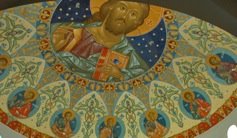
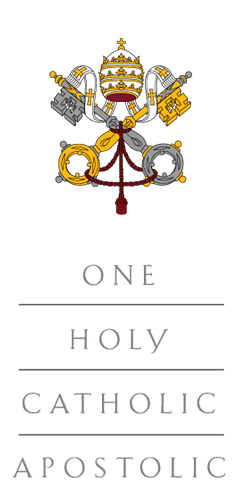
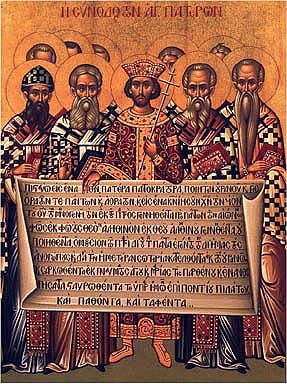

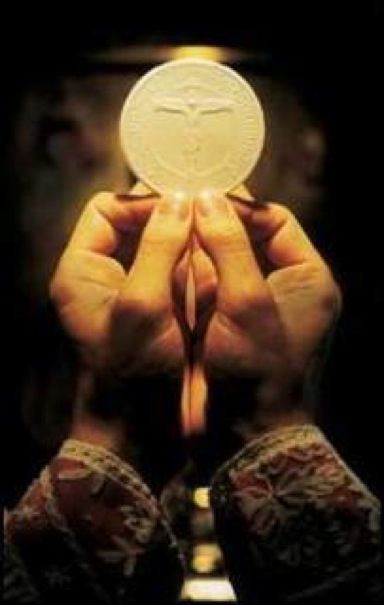


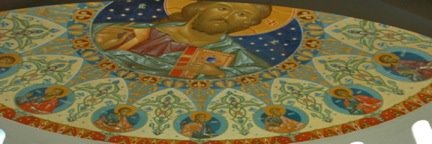
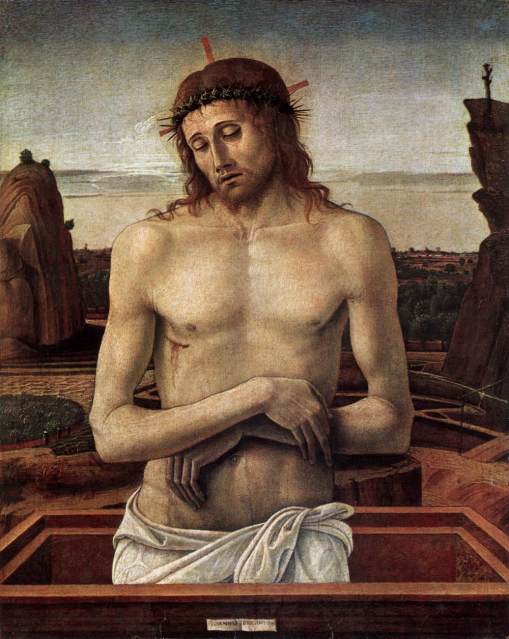
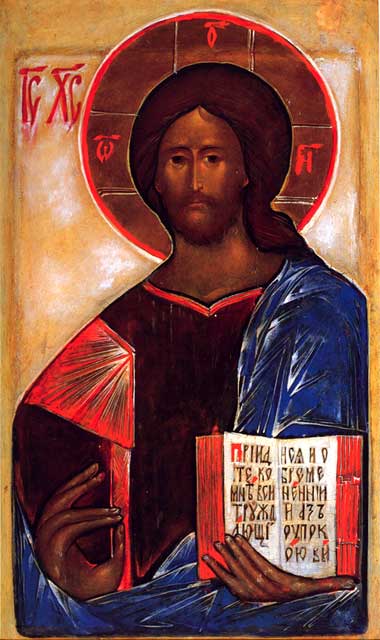




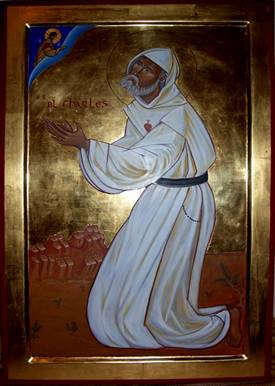




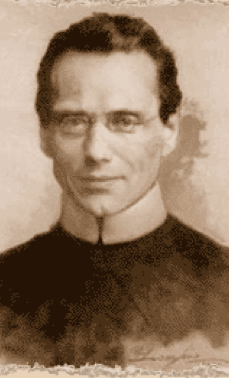
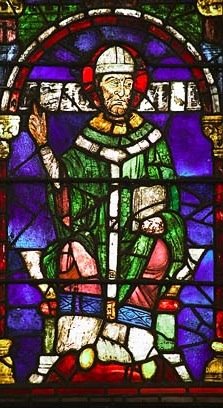

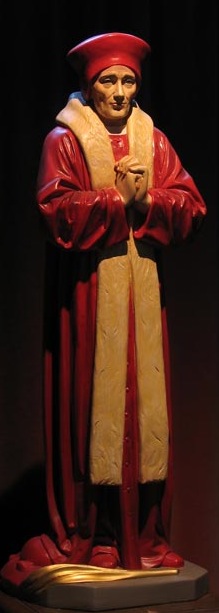

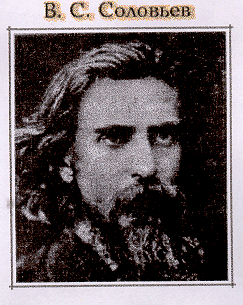


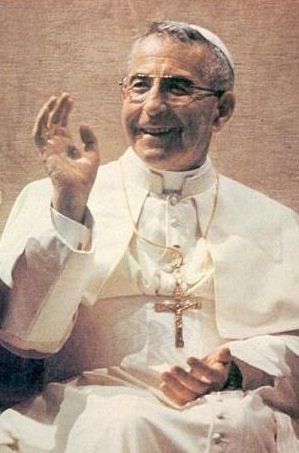
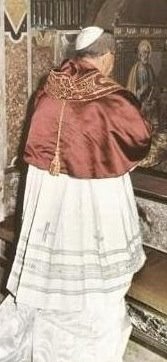
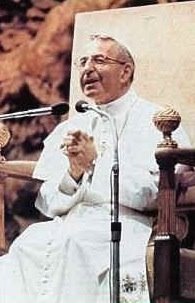

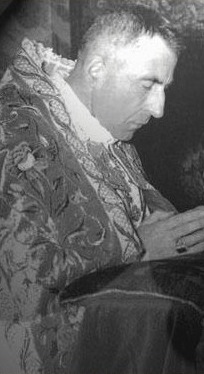





No comments:
Post a Comment